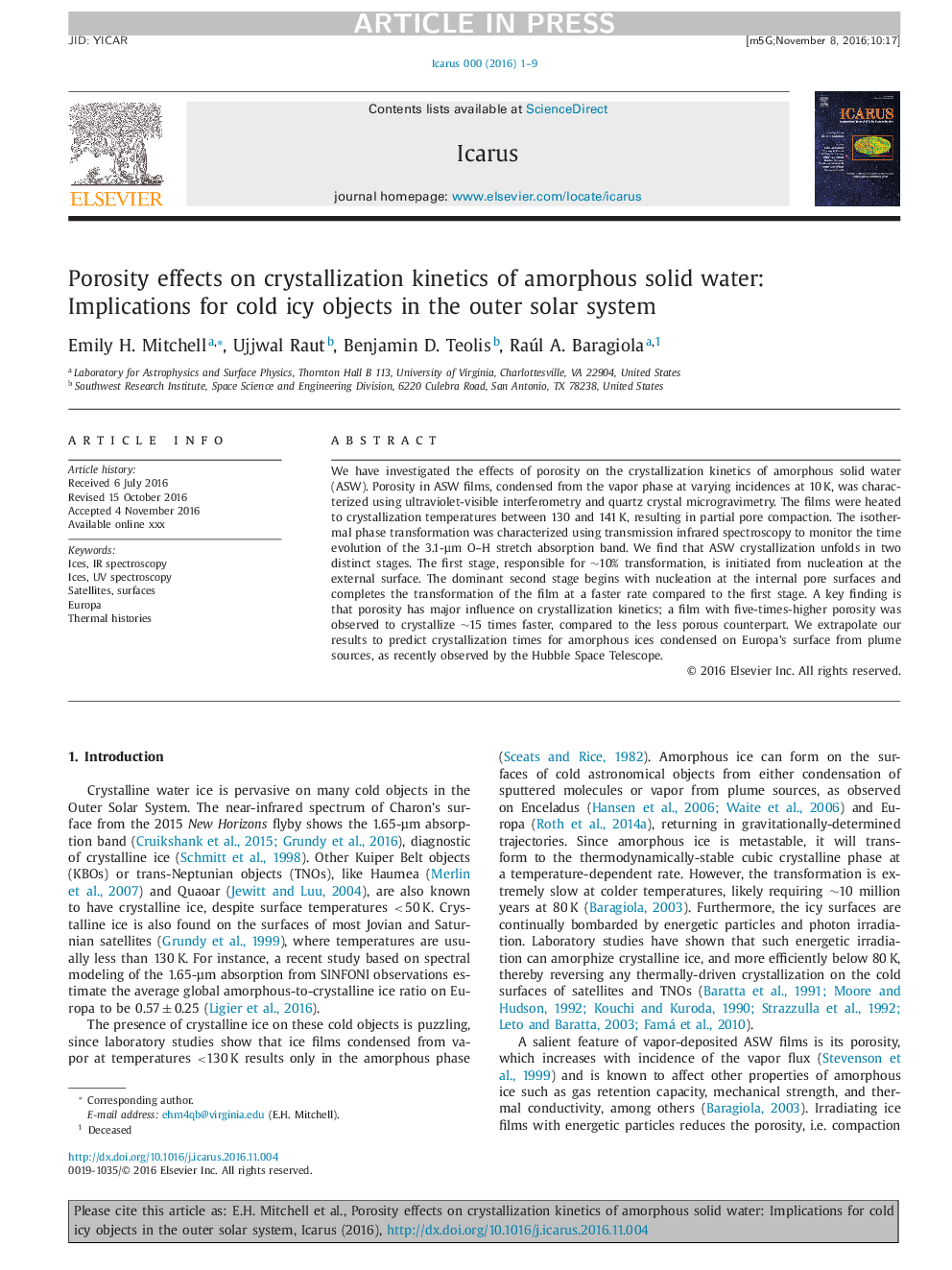| Article ID | Journal | Published Year | Pages | File Type |
|---|---|---|---|---|
| 5487072 | Icarus | 2017 | 9 Pages |
Abstract
We have investigated the effects of porosity on the crystallization kinetics of amorphous solid water (ASW). Porosity in ASW films, condensed from the vapor phase at varying incidences at 10 K, was characterized using ultraviolet-visible interferometry and quartz crystal microgravimetry. The films were heated to crystallization temperatures between 130 and 141 K, resulting in partial pore compaction. The isothermal phase transformation was characterized using transmission infrared spectroscopy to monitor the time evolution of the 3.1-µm OH stretch absorption band. We find that ASW crystallization unfolds in two distinct stages. The first stage, responsible for â¼10% transformation, is initiated from nucleation at the external surface. The dominant second stage begins with nucleation at the internal pore surfaces and completes the transformation of the film at a faster rate compared to the first stage. A key finding is that porosity has major influence on crystallization kinetics; a film with five-times-higher porosity was observed to crystallize â¼15 times faster, compared to the less porous counterpart. We extrapolate our results to predict crystallization times for amorphous ices condensed on Europa's surface from plume sources, as recently observed by the Hubble Space Telescope.
Related Topics
Physical Sciences and Engineering
Earth and Planetary Sciences
Space and Planetary Science
Authors
Emily H. Mitchell, Ujjwal Raut, Benjamin D. Teolis, Raúl A. Baragiola,
